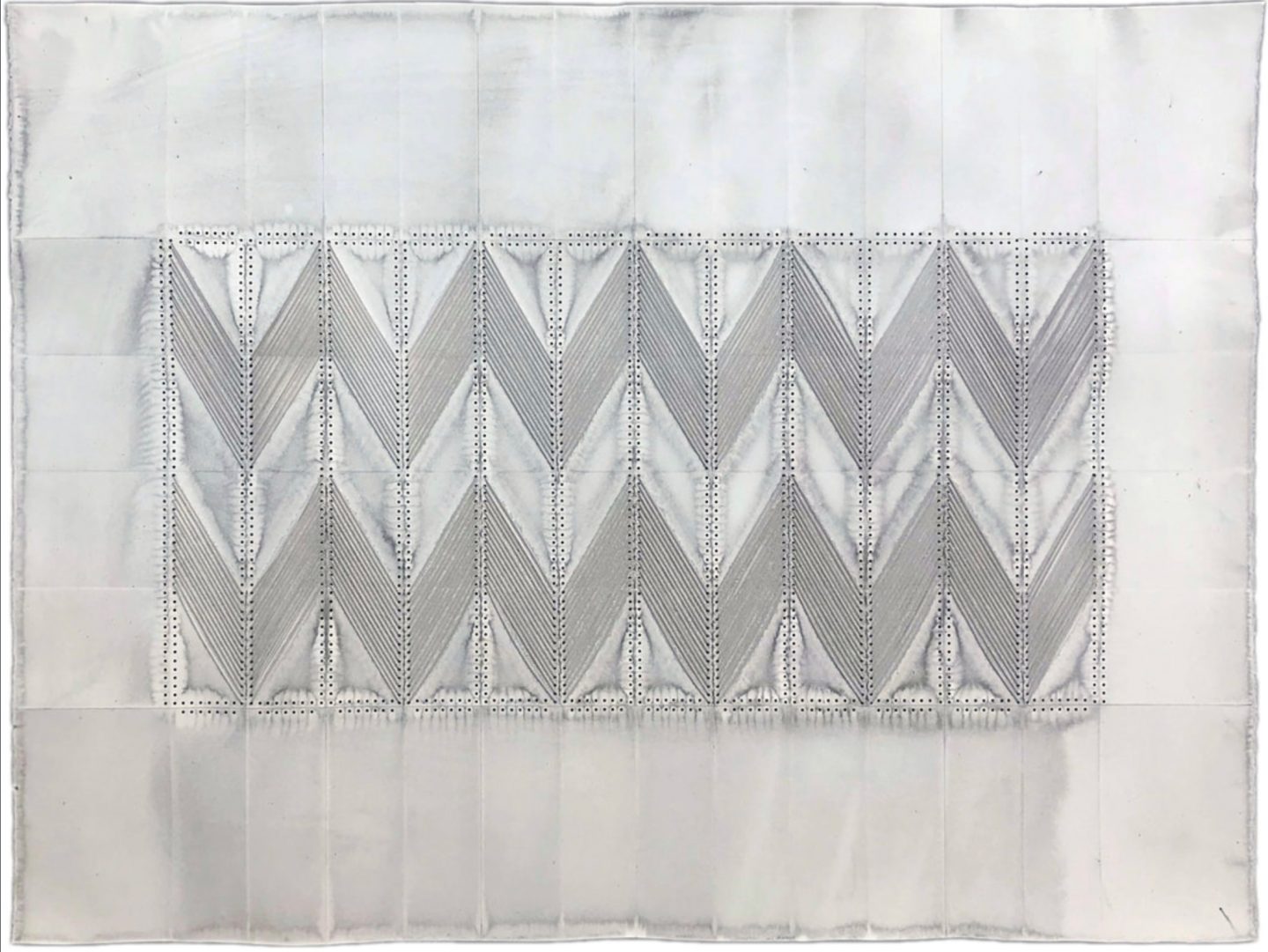Kate Little:
Music, maths and more

Exploring the crossovers between mathematics, textiles, painting and music has led artist Kate Little in unexpected directions.
Kate Little’s works on paper were a standout at this year’s Helpmann Academy Graduate Exhibition where she was awarded The Hill-Smith/University of South Australia Postgraduate Award ($10,000 cash) and was also the recipient of the People’s Choice Award. Little, who is part way through her PhD at the School of Art, Architecture and Design at the University of South Australia, has already developed a strong practice as a painting and textiles artist.
Little came to an art career later in life after studying and working in medicine and undertaking post-graduate study in the field of bioinformatics, using computer-based mathematical models to determine risk in health. The career shift came about when she took a job at a craft publishing house in the editorial, executive and creative departments. This reinforced and developed her appreciation of materials, pattern and colour.
“It really was quite life altering. I decided to take a different direction and that’s what led me to undertake an undergraduate degree at UniSA,” says Little.
Little’s practice is situated within the field of contemporary painting, exploring overlaps between different disciplines and developing systems and processes for shifting between these areas. Her recent work developed in second year when she began looking at crossovers between maths, textiles, painting and music.
“This is when I began folding paper, punching paper, threading it and using it as a surface to pour ink on,” explains Little. “While I am creating works on paper I am exploring different disciplines and their overlaps, particularly grid-based ways of thinking and how this is evident in rule-based art.”
Little is interested in generative art and the impact of computers in this area. Her work looks at the relationship between digital and analog and the influence of devices such as the Jacquard weaving loom, pianola music rolls and early punch card computers.
“I have mapped data onto grids and used musical motifs and manipulated them like textile patterns. I use this surface to pour ink on and then the work emerges and paints itself,” she explains. “The site becomes a surface to observe the interplay of materials, spatiality, and the tension between order and chaos.”
Little has a busy 2020 ahead. As well as completing her PhD, she will have her work featured in a group exhibition, Common Threads, at ANCA in Canberra in April, and from June to November she is exhibiting at MOD as part of the exhibition, It’s complicated.
Little’s practice incorporates many different disciplines and ways of thinking and explores different material properties. While her method of pouring ink onto paper involves an element of chance, the works are created with grids and systems which contain structure. Through her work, Little is seeking and succeeding in finding a balance between chaos and control.